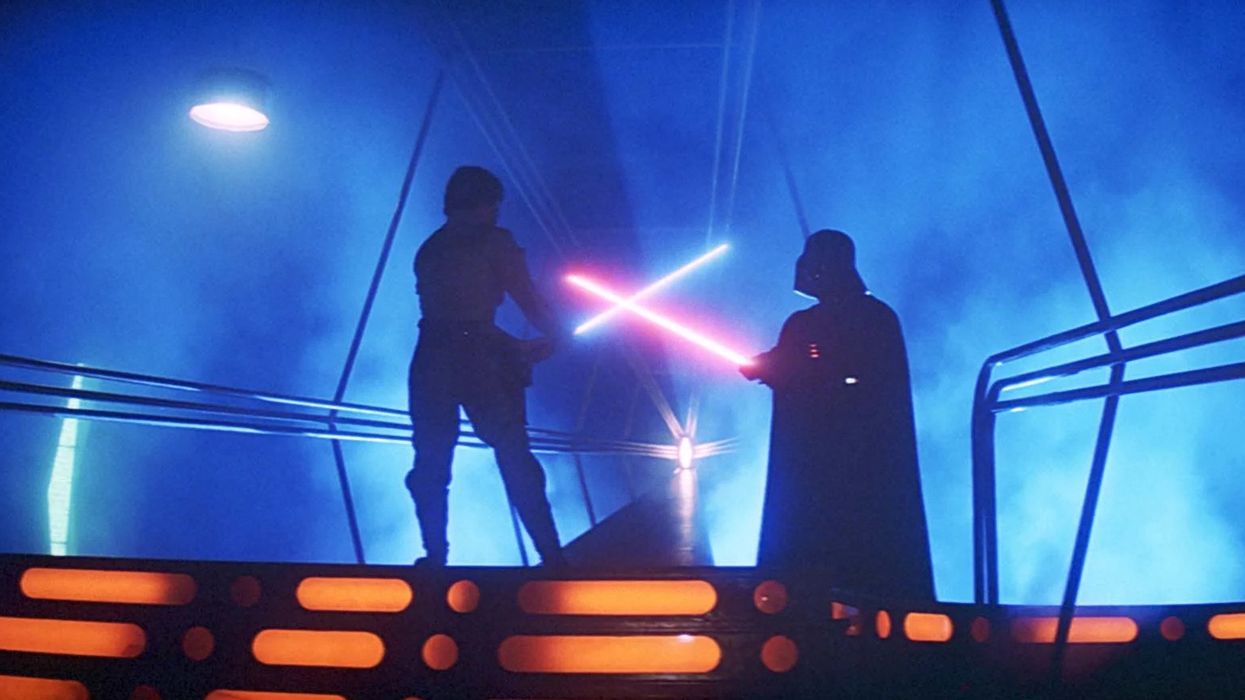How Improv and Cheap Solutions Saved 'The Empire Strikes Back'
Improvising and finding practical solutions can be lifesavers when things are just not working.

Directing a sequel is an intimidating task, especially when the fate of the franchise rests in your hands.
This was the position that director Irvin Kershner found himself in when George Lucas asked him to take on the highly anticipated sequel Star Wars Episode V: The Empire Strikes Back.After directing the original Star Wars movie, Lucas turned to his friend and mentor Kershner to direct the very first Star Wars sequel.
Kershner ran into a few challenges that were unique to directing Star Wars. Although Kershner understood the script, characters, and material, there were unexpected moments that Kershner had to adapt to and learn from.
Let’s break down how Kershner overcame these unique filmmaking challenges in The Empire Strikes Back with a little improvisation.
When in Doubt, Get the Fishing Wire Out
In a scene where C-3PO is strapped to Chewbacca’s back as they run away from Stormtroopers, C-3PO’s head is moving from side to side as his one free arm moves up and down.
The animatronic to make this visual moment work on screen cost $100,000, according to Kerschner, and worked perfectly in all of the test footage.
On the first take of the scene, the animatronic stopped working.
The head and the arm slightly wiggled, but it did not perform the movements that Kershner wanted to see. Nobody seemed to know what to do on set until a prop master came up to Kershner and said he could get it working. Kershner asked him if he knew how to work with electronics, and the prop master said he knew and could get it working in 15 to 20 minutes.
About half an hour later, the prop guy comes back, and he asks Kershner if he wants to see the expensive animatronic in action. When they shot the scene, C-3PO moved perfectly and Kershner was ecstatic.
“I turn back [to see] a long fishing pole,” Kershner recalled in an interview. The prop master had disconnected the head and the arm from the electronics and operated C-3PO’s movements with a fishing pole from the back of the room.
The adjustment cost nothing. There was no need to spend any money on the animatronics. The team didn’t think about the practical effects that could be improvised by a puppeteer or—in this case—a prop master, and that’s all right. At that moment, improvisation saved the day and delivered the scene that Kershner believed would sell the character of C-3PO.

The Power of This Improvised Line
C-3PO wasn’t the only character that had an improvised moment in The Empire Strikes Back.
In Han Solo’s (Harrison Ford) final moments of the film, Princess Leia (Carrie Fisher) finally tells him that she loves him. He was originally supposed to respond, “I love you, too,” or possibly the much longer, “I love you. I couldn’t tell you before, but it’s true. Just remember that I’ll be back.”
Kershner and Ford felt that there was something wrong with the line. After spending so much time with the character, both felt that Han wouldn’t pour his heart out like that, even when facing his probable doom.
After multiple takes, Kershner told Ford to just deliver a response that felt natural to the character. The result was this:
In an interview with Jon Favreau, Ford explained why instinct was to respond with the now iconic line, “I know,” saying:
So I said, I mean what’s the last thing a woman wants to hear when she says “I love you”? She says, “I love you,” and I say, “I know.” And so we shot one like that just for protection where I spoke the line as written and George, and I think this is fair to say, he went apeshit. He thought it was horrible and that it would get a bad laugh. So I was obliged to sit next to him when he tested it for the first screening. There was a laugh but it was a laugh of recognition. And so he generously let it stay in the movie.
Kershner understood that the characters and the relationship between them weren’t being fully taken advantage of at that moment. Allowing for improvisation from Ford established that Han is and always will be the cool guy even when faced with death.
There are moments in a script that feel right when you are just reading the story. The moment the story begins to come to life, certain details will change. Your ultimate vision will remain the same, but the details will change during production to make the best and most cohesive story possible for yourself and the audience.
Filmmaking is all about being in service of the story and not yourself. Don’t be afraid to try something different from what was originally planned. Improvisation can lead to some of the most memorable moments of the film, or can also save you in those last-minute changes in a scene.
Do you have any Star Wars behind-the-scenes trivia that you would like to share? Let us know in the comments!
Source: CinemaStix











